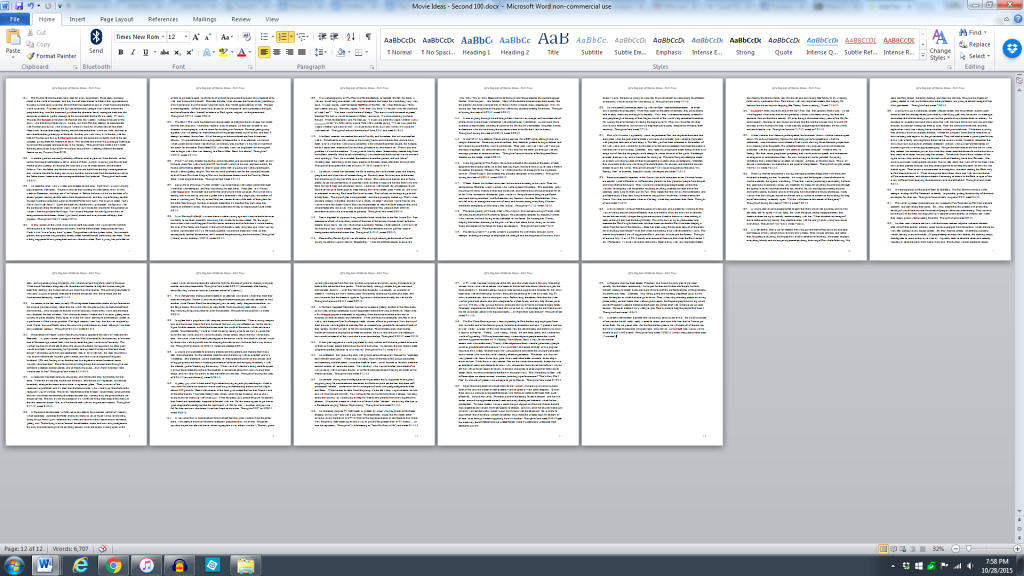I’m curious about something: I wonder what the ratio of the number of movies someone watches to the number of ideas for movies that person has would be on average (per year). For me, that ratio is about 1:3 – I’ve watched about 52 movies within the past year, not including movies I re-watched, and in that time I’ve had 150 ideas for movies. I’ve been keeping track of all the movies that I’d really like to see, if they only existed. The odd thing is that this wasn’t a goal of mine. I never decided that I needed to think of at least 150 movies by the time one year had passed; it just happened, even though I’d never had so many ideas in such a short time before.
In autumn of 2014, I took a class on how to write for television, film, and radio. One of the required readings for the class was a book called How to Get Ideas. This book explains that an idea is “nothing more nor less than a new combination of old elements.” At the time, I had been focused on ideas I was having for films I could write, and I was pleased to see that, after reading a bit of the book, the number of ideas started increasing. It was very enlightening to learn to be on the lookout for elements I could combine. At a certain point, I had to write a list to keep track of all these ideas.
The fascinating thing is that the list actually helped increase the number of my ideas even more than the book did. Why? Basically, I developed a new instinct. Apparently, when I keep a list, there is some part of the back of my mind that is always scanning my thoughts for possible additions to the list, and it notifies me when something matches the list’s criteria. (I have seen this happen with my list of my favorite movies, because I usually can’t think of any movie at all without getting a notification from my subconscious that reads, “Should that be added to the list?”) I have become intuitively, constantly, and inevitably alert for elements that can be combined into new ideas.
It’s funny how it started so simply: exactly one year ago today (well, not at this time of day, since I think it was just before my 11am class) I noticed that I was forgetting the ideas I’d thought of earlier that month, and I decided to take a couple little notes on my iPhone. Once I had done that, the switch in my brain was flipped, and it was a Movie Idea Factory. The iPhone notes eventually had to be moved to Google Docs because it became too hard to navigate through the list once I had over 30. Once I reached 100 ideas, I made a separate document (in Microsoft Word) for the second 100. I also added a list for the ideas I’d had before I started keeping a list, which has less than 30, revealing just how unfruitful that part of my brain had been throughout my lifetime until a year ago today.
However, the factory’s rapidity has slowed down over the past few months (with only one movie idea in all of October), which is to be expected. I have spent most of my time over the past year with the same people, in the same places, enjoying the same entertainment, and walking the same streets. This means I have already used up all of the elements that surround me regularly, and if I want to have a lot more ideas again, I need to change my environment. I don’t think the decrease is a bad thing though, partly because I could never actually get 150 screenplays produced, and partly because I have been getting several ideas for songs this month (to an extent I’ve never seen before). I do look forward to changing jobs and locations soon, because I really think that would spark my imagination, but for now, I’m content with the number of ideas for movies I’ve already had.
Oh, wait, I just had #151 . . . .
